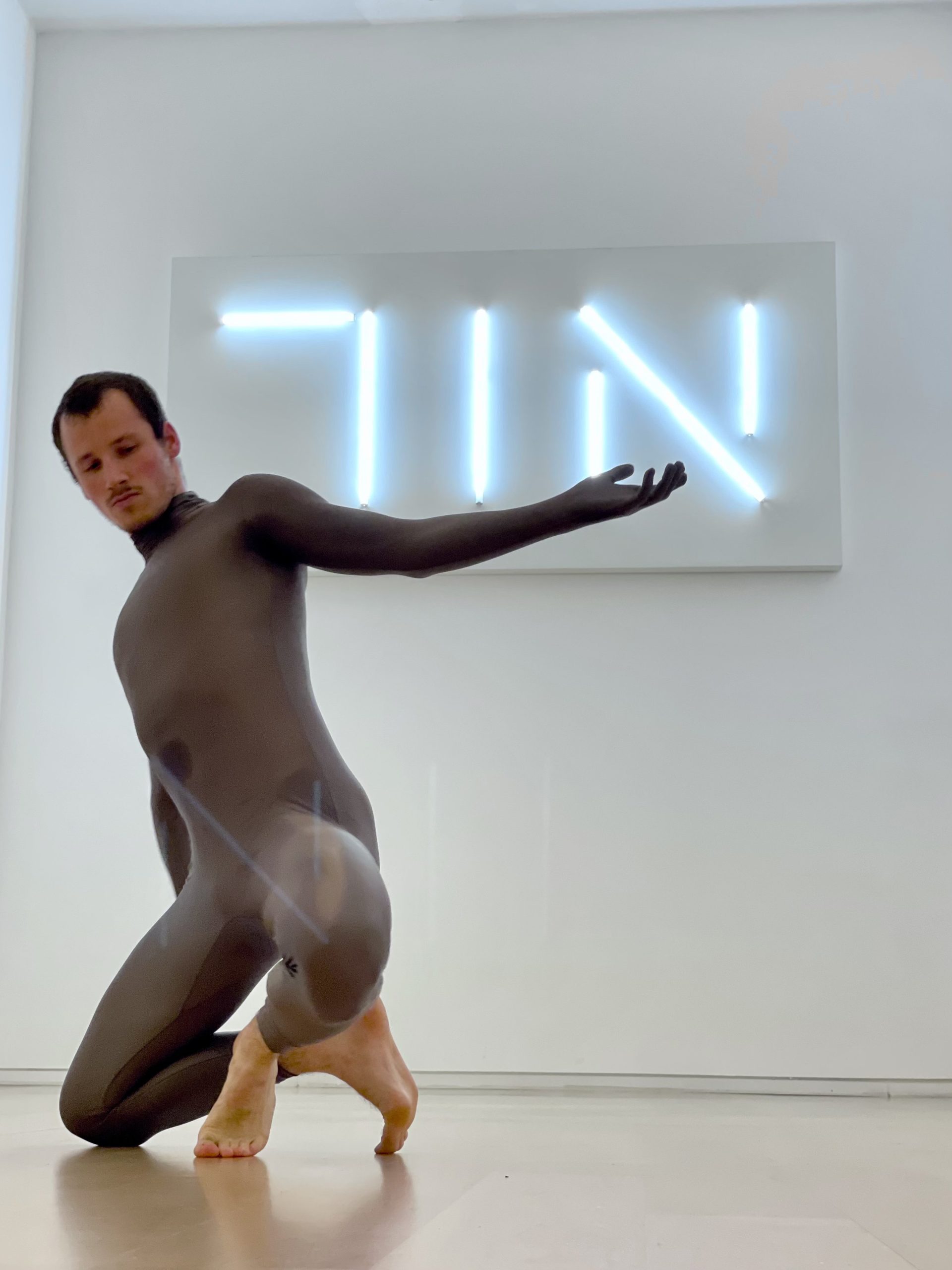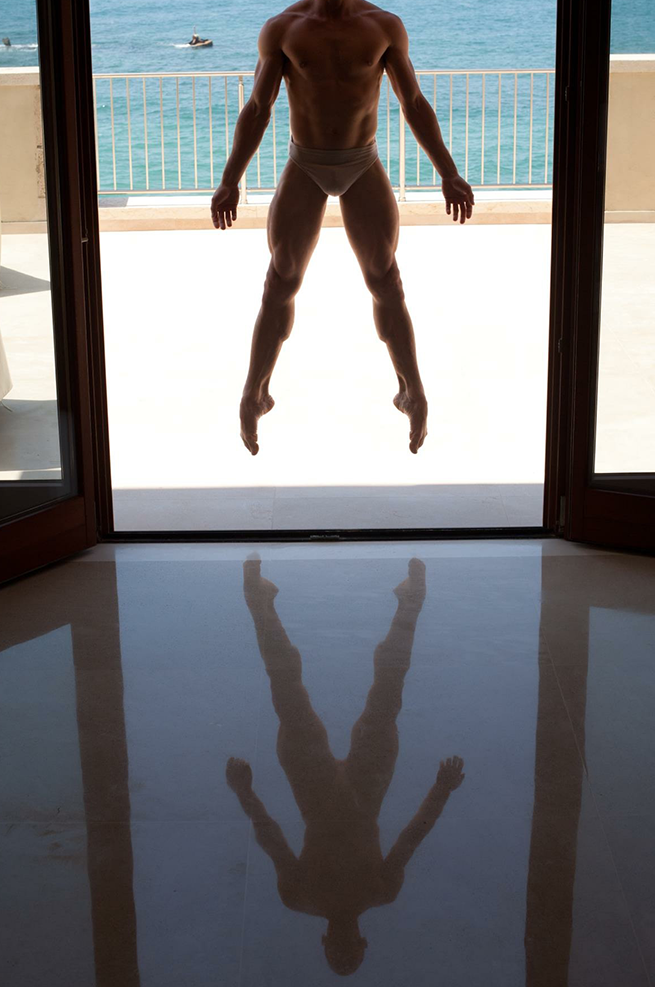לאלתר ALTAR
מייצג של עמל ומחול שחוגג את ההיעשות של חלל למקום, היכל, מחסה ומקדש. הרקדן והאמן ארתור אסטמן מזמין את הקהל
להתארח בסטודיו האינטימי שלו ויוצר מולו בזמן אמת, מבנה מפריטים אקראיים שנאספו מהרחוב ביום המופע. הבניה נעשית
ללא תכנון מקדים ומתוך התכוונות ליצור חיבור וסדר חדש מהחומרים שאסף לסטודיו.
העבודה נעה במרחב שבין חול לקודש, ובין חסר הייחוד לווירטואוזי, מתחילה באופן טכני ובהדרגה מתהווה לתנועה מחולית
ודרמטית המזכירה ריקוד של כהנים המשרתים בטקס. הגבול בין הטכני לאמנותי מטשטש. תהליך העבודה המרוכז והיצירתי
מייצר מבנה שהוא גם אובייקט וגם מקום, התובע את מקומו אל נגד עיני הצופים – דבר שקם לאלתר ואין להתעלם ממנו.
בכל מופע נוצר מקדש אחר לגמרי בעל תחביר צורני חדש, והריקוד בו משתנה בהתאם לחומרים שארתור בוחר באותו היום.
עובדה זו מעמידה בסימן שאלה את רעיון הקדושה; מה הופך משהו סתמי ויומיומי לאובייקט בעל חשיבות קדושה?
האם מדובר בגמול על העבודה הסיזיפית? אולי זה התיווך והכוונה של האדם בלבד שהופך אותו לכזה?
או דווקא נוכחותם של האנשים בחלל באותו זמן ומקום היא המייצרת את ה"מעמד"?.
בעבודה זו, הריקוד, החותם את המייצג ומכתיר את תכלית המבנה הסופי, למעשה מבקש להעניק לו את מעמדו החדש.
ארתור אסטמן הוא יוצר, פרפורמר, כוריאוגרף ורקדן. הצטרף לתיאטרון קליפה ב-2014 ומ-2015 משמש ככוריאוגרף הבית.
יצירתו האחרונה היא "קרטושקה" והינה שיתוף פעולה עם האמן רפאל האוגס.
יצירה וביצוע: ארתור אסטמן
ליווי אמנותי: עידית הרמן
צילום: max poly
תודה מיוחדת לאילנה בלסן
*המופע ללא מילים
.A performance of labour that celebrates the becoming of anonymous space to a distinctive place, shelter and a temple
The artist Artour Astman invites the audience to harbour in a studio space as the artist creates in real time and In front of the audience, a unique structure. The structure is created from random items that were collected from the street on the same day of the show. The process of building the structure is taking place with no former planning, and directed by the intention to create each time new connection between the different and changed items
The piece lives in the space between the sacred to the secular, and moves from the ordinary to the virtuosic, as it starts from technical perspective and gradually shifts to dramatic dance movements, which reminds the dedicated movements of clerics serving in a ceremony. The difference between the technical and the artistic blurs.
.The labor invested in the process produces an object which is also a structure, that demands its place in-front of the audience- A thing that claims immediate acknowledgment and cannot be ignoredThe word- Altar in Hebrew means something that comes to be right away, and also something that is being improvised. In each performance the erected structure bears new constructive logic, and the dance movements are similarly different each time as they correspond with different items that were collected in the same day (building blocks), and singular relation to a different structure than before.
This fact questioning the concept of the Holy; what transforms the daily or even the meaningless to a sacred object with dedicated function and awe? Is it our intention and mediation that transforms the plain, neglected, or cast away to the transcendental and unique? Is it the presence of others, watchers, who validate this transformation, and change the circumstances into a special occasion? The dance in this piece functions also as a formal closure that crown the new structure with its new repurposing, and symbolises its new possible life.
Artour Astman is a creator, performance artist, choreographer and dancer. He joined Clipa Theatre in 2014, and from 2015 serves as the home choreographer of Clipa. His last work was Kartoshka co-created with Raphael Haugas
Creation and performance- Artur Astman
Artistic guidance – Idit Herman
Photography- max Polyballasen
Graphic design- Matan Shalita
Special thanks- Ilana Sarah Claire Bellahsen








